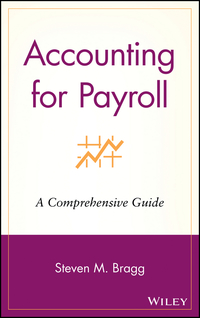Question
Indicate which of the three suppliers should be used for FY2021. Develop a supplier scorecard using the following scale: 3=best, 2=second best, 1=worst and the
- Indicate which of the three suppliers should be used for FY2021. Develop a supplier scorecard using the following scale: 3=best, 2=second best, 1=worst and the weights provided in the case to support your selection. Remember for your quality rating you must first determine the Capability Index (show your results) for each supplier.
Throx sells higher-end custom-design socks in three-sock sets (rather than two). The company operates from a small packaging and distribution facility in Richmond, CA from which it ships product to customers. Given the companys location and focus, 97% of sales are in California, primarily in the major urban areas of the San Francisco bay area, Los Angeles, Sacramento (and last but not least) San Diego. The company sells exclusively via online sales, at an average price of $18/three-sock set, plus shipping costs charged to the customer.
The company currently orders its product from the Chinese sock manufacturer Zhejiang Datang Hosiery Group Co., Ltd in so-called Sock City. Socks are shipped via truck to the port of Shanghai, from where they are shipped to the port at Los Angeles-Long Beach via ocean freight. Once offloaded in Los Angeles-Long Beach, the socks are shipped via truck to the Richmond facility. On average, shipment from the manufacturer to the Richmond facility takes 4 weeks. In addition to the transit time required for shipment, the lead time from when an order is placed with the manufacturer to when it is shipped from Zhejiang is 3 weeks. So, the total lead time is considered to be 7 weeks from when Throx places an order until it reaches the Richmond facility. Historically, the standard deviation of lead time has been 1 week.
The company provides you with the following information for the past two fiscal years:

Throx uses two main forecasting methods based on annual data to predict orders for the following year, a weighted moving average and exponential smoothing. They provide you with the following information about forecasts for FY 2017 through FY2020:

The initial inventory for all sock styles combined at the beginning of FY 2021 is 2,250 units. You also have information on current costs, which includes:
- Order cost to Throx for an order placed with its current supplier, $/order = S = $225
- Holding cost per set per per year = H = $1.75
- The company currently pays $6.80 for each set of socks. = P
The company uses a continuous review replenishment policy, and has IT systems in place that allow constant monitoring of key information. Last year, the company used an ROP under this policy of 1,900 units for all sock styles and an order quantity Q of 4,500 units for all sock styles.
Potential Alternatives to Current Supply Chain Management
The company has asked you to evaluate a number of alternatives to their current SCM practices, including at a minimum their choice of supplier, transportation modes, warehouse capacity, order quantities and safety stock.
Alternative Suppliers
The company has contacted potential alternative suppliers in China, who have offered the following information relative to the current supplier:

For the quality performance assessment of the suppliers, Throx would like you determine the Capability Index for each Supplier based on the following information. Throx considers it critical that the suppliers can maintain their minimum Target Sock Thickness: 6mm +/- .5mm
| Measures in mm | Current | Alternative A | Alternative B |
| Mean Sock Thickness | 6 | 5.8 | 6.2 |
| Standard Deviation | 0.15 | 0.11 | 0.18 |
Alternative Transportation
An alternative to their current transportation approach available to Throx is shipment by UPS Express Air from Shanghai to Richmond, which averages 3.5 days. The comparison of costs is given as:

* No data are available about variation in transit times, so Throx assumes this is constant.
Similar to their decision about sourcing, Throx wants to use a single-sourcing strategy for transportation, so they want a recommendation about which mode would be best.
NOTE: Ignore the current port capacity issues when making your decision/ recommendation
Demand Characteristic Annual Demand, sets Average Weekly Demand Std Deviation of weekly Demand 2019 26,270 505 126 2020 29,975 576 144 Actual Demand (Three Sock Sets) Weighted Moving Average Fcst Exponential Forecast 2017 18,850 14,500 15,000 2018 22,750 17,060 18,080 2019 26,270 20,805 21,816 2020 29,975 24,472 25,379 Weighted Moving Average uses W=0.6 and W-1=0.3. Wt-2.1 Exponential Smoothing uses a=0.8. Supplier Characteristic Unit Price $/3-sock set Order cost, $/order QA CPk Financial condition of the firm Current Alternative A Alternative B $ 6.50 $ 5.75$ 5.50 $ 250$ 325$ 225 TBD TBD TBD Good Poor Fair Supplier Characteristic Unit Price, S/3-sock set Order cost, $/order Defect Rate Financial condition of the firm Weight 0.4 0.1 0.3 0.2 Transporation Supplier Characteristics Units cost, $/sock set Damage Rate Average Transit time, weeks Maersk Ocean Freight (current) $ 1.35 $ 2.8% UPS AirExpress (Alternative) 3.95 0.5% 0.5 4Step by Step Solution
There are 3 Steps involved in it
Step: 1

Get Instant Access to Expert-Tailored Solutions
See step-by-step solutions with expert insights and AI powered tools for academic success
Step: 2

Step: 3

Ace Your Homework with AI
Get the answers you need in no time with our AI-driven, step-by-step assistance
Get Started


